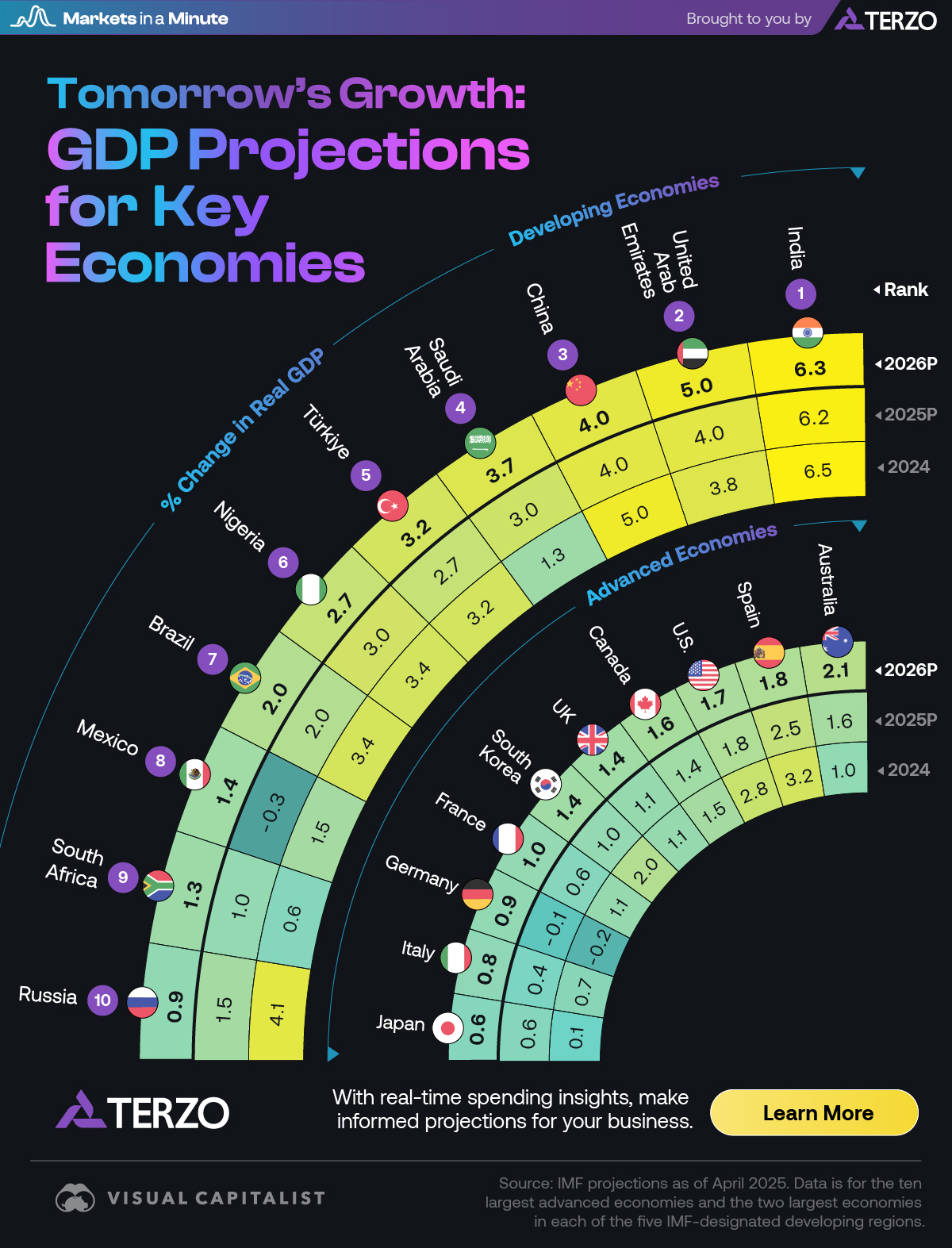Report on U.S. Economic Disparities and Sustainable Development Goal Implications
Introduction: A Contradiction in National Economic Indicators
An analysis of the current U.S. economic landscape reveals a significant divergence between headline macroeconomic data and the financial reality for a substantial portion of the population. While national figures indicate a healthy Gross Domestic Product (GDP) growth of 3.8% and a stable unemployment rate of 4.3%, these metrics mask underlying economic fragility and growing inequality. This report examines these disparities through the lens of the United Nations Sustainable Development Goals (SDGs), particularly SDG 8 (Decent Work and Economic Growth), SDG 10 (Reduced Inequalities), and SDG 1 (No Poverty).
Challenges to Inclusive and Sustainable Economic Growth (SDG 8 & SDG 10)
Regional Economic Contraction
A granular analysis indicates that national economic growth is not inclusive. According to Moody’s, the economic status of U.S. states is highly fragmented, posing a direct challenge to the uniform progress envisioned by SDG 8.
- 22 states are experiencing economic contraction.
- 16 states are experiencing economic growth.
- 13 states are classified as “treading water.”
The overall positive national GDP is largely driven by a few key states, such as California, Texas, and New York. This concentration of growth highlights a failure to achieve equitable regional development, a key component of reducing national inequalities (SDG 10).
Vulnerability of Low-Income Households
The economic strain is most acute among lower-income households, whose situation undermines progress toward SDG 1 (No Poverty) and SDG 8 (Decent Work). Despite low national unemployment, the financial stability of this demographic is tenuous.
- Financial Precarity: Many low-income households are described as “hanging on by their fingertips,” with minimal to no savings to absorb economic shocks.
- Debt Burden: This group carries significant debt, including auto and student loans, which limits their financial mobility and resilience.
- Stagnating Wages: Wage growth for the bottom quintile of earners is lagging, meaning their purchasing power is not keeping pace with inflation, further widening the inequality gap (SDG 10).
This “recessionary environment” for lower earners exists irrespective of their employment status, as the quality and remuneration of their work are insufficient to ensure economic security.
Geographic Disparities and Policy Impacts
Factors Driving Regional Downturns
Specific regions are experiencing economic decline due to a confluence of policy impacts and industry-specific challenges, affecting the sustainability of local communities (related to SDG 11: Sustainable Cities and Communities).
- District of Columbia, Maryland, and Virginia: These areas are negatively impacted by federal layoffs, funding cuts, and government shutdowns.
- Midwestern States: States with economies reliant on manufacturing, agriculture, transportation, and mining are struggling due to the effects of tariffs and restrictive immigration policies.
- Georgia: This state has seen a significant weakening, attributed to its large manufacturing and agricultural base, rising costs of living, and a softening housing market.
Dependence on Key Economic Centers
The national economy’s overall stability is precariously dependent on the performance of a few large states, namely California and New York. This over-reliance on specific economic hubs is contrary to the goal of building a resilient and diversified national economy as promoted by SDG 8.
- New York: Its economic health is closely tied to the financial services sector and the S&P 500.
- California: Its performance is linked to the technology sector and wealth generated by booming AI companies.
A downturn in these key states could be sufficient to push the entire national economy into recession, demonstrating a systemic vulnerability that conflicts with the principles of sustainable development.
Conclusion: Misalignment with Sustainable Development Goals
The current U.S. economic situation, characterized by a facade of national strength concealing widespread regional and socio-economic distress, is fundamentally misaligned with the core tenets of the Sustainable Development Goals. The lack of inclusive growth, the deepening of inequalities, and the financial insecurity of the most vulnerable populations represent significant obstacles to achieving SDG 1, SDG 8, and SDG 10. A sustainable economic path requires policies that foster broad-based growth, ensure decent work and fair wages for all, and reduce the stark inequalities that currently define the American economy.
SDGs, Targets, and Indicators Analysis
1. Which SDGs are addressed or connected to the issues highlighted in the article?
- SDG 1: No Poverty – The article discusses the financial precarity of low-income households, describing them as “hanging on by their fingertips financially” with little to no savings and significant debt. This directly relates to the goal of ending poverty in all its forms.
- SDG 8: Decent Work and Economic Growth – This is a central theme, with the article citing national GDP growth (3.8%) and unemployment rates (4.3%). It also explores the quality of economic growth, job market perceptions, and lagging wage growth, which are core components of SDG 8.
- SDG 10: Reduced Inequalities – The article’s primary argument is that the national economic data masks significant inequalities. It highlights disparities between wealthy and low-income households, and between economically contracting and growing states, which is the core focus of SDG 10.
2. What specific targets under those SDGs can be identified based on the article’s content?
-
SDG 1: No Poverty
- Target 1.2: By 2030, reduce at least by half the proportion of men, women and children of all ages living in poverty in all its dimensions according to national definitions. The article’s description of lower-income households struggling with debt, having no savings, and facing a tenuous financial situation speaks to the dimension of economic vulnerability, which is a key aspect of poverty in a developed nation context.
-
SDG 8: Decent Work and Economic Growth
- Target 8.1: Sustain per capita economic growth in accordance with national circumstances. The article directly addresses this by mentioning the national GDP growth of 3.8%, but it also provides a nuanced view by stating that this growth is not sustained across all regions, with 22 states experiencing economic contraction.
- Target 8.5: By 2030, achieve full and productive employment and decent work for all. The article discusses the national unemployment rate of 4.3% but questions its effectiveness as a sole measure of economic health. It also notes that “wage growth for folks in the bottom part of the distribution is lagging,” which challenges the “decent work” aspect of this target.
-
SDG 10: Reduced Inequalities
- Target 10.1: By 2030, progressively achieve and sustain income growth of the bottom 40 per cent of the population at a rate higher than the national average. The article directly contradicts progress towards this target by stating the U.S.’s fortunes are “tethered to the prospects of the wealthy” and that “wage growth for folks in the bottom part of the distribution is lagging.”
- Target 10.2: By 2030, empower and promote the social, economic and political inclusion of all, irrespective of… economic or other status. The analysis highlights a significant economic divide, where low-income individuals and residents of certain states are excluded from the overall national economic growth, feeling as if they are in a “recessionary environment.”
3. Are there any indicators mentioned or implied in the article that can be used to measure progress towards the identified targets?
-
Indicators for SDG 1 (No Poverty)
- Implied Indicator: Household savings and debt levels. The article implies this by stating that lower-middle income groups “really don’t have much in the way of saving” and have “auto debt, they have student loan debt.” These metrics can measure financial vulnerability.
-
Indicators for SDG 8 (Decent Work and Economic Growth)
- Indicator 8.1.1 (Annual growth rate of real GDP per capita): The article explicitly mentions the national GDP growth rate of “3.8% in the past quarter.” It also provides a state-level breakdown, noting “22 U.S. states are seeing their economies contracting.”
- Indicator 8.5.2 (Unemployment rate): The article states the national unemployment rate is at a “steady 4.3%.”
- Implied Indicator: Wage growth rate. The article mentions that “wage growth for folks in the bottom part of the distribution is lagging now, too,” which is a direct measure of the quality of employment and economic returns for workers.
-
Indicators for SDG 10 (Reduced Inequalities)
- Indicator 10.1.1 (Growth rates of household… income per capita among the bottom 40 per cent… and the total population): This is strongly implied when the article contrasts the spending of the wealthy (“the only consumers spending ahead of inflation”) with the lagging wage growth and financial struggles of lower-income groups.
- Implied Indicator: Regional economic disparity. The Moody’s analysis showing that 22 states have contracting economies while 16 are growing serves as a clear indicator of geographic and economic inequality within the country.
- Implied Indicator: Consumer confidence by income cohort. The reference to the Conference Board’s survey, which found that those on the lowest end ($25,000 to $35,000 pa) “felt worse about the economy,” serves as an indicator of perceived economic inequality.
4. Summary Table of SDGs, Targets, and Indicators
| SDGs | Targets | Indicators |
|---|---|---|
| SDG 1: No Poverty | 1.2: Reduce poverty in all its dimensions according to national definitions. |
|
| SDG 8: Decent Work and Economic Growth |
8.1: Sustain per capita economic growth.
8.5: Achieve full and productive employment and decent work for all. |
|
| SDG 10: Reduced Inequalities |
10.1: Sustain income growth of the bottom 40 per cent.
10.2: Promote social and economic inclusion of all. |
|
Source: fortune.com







